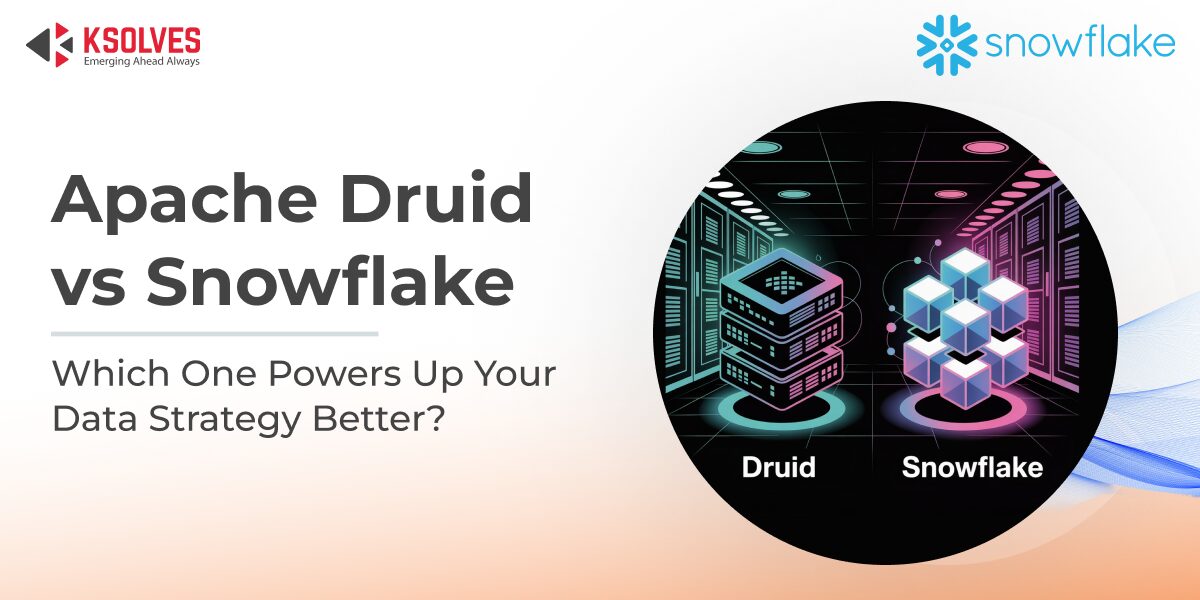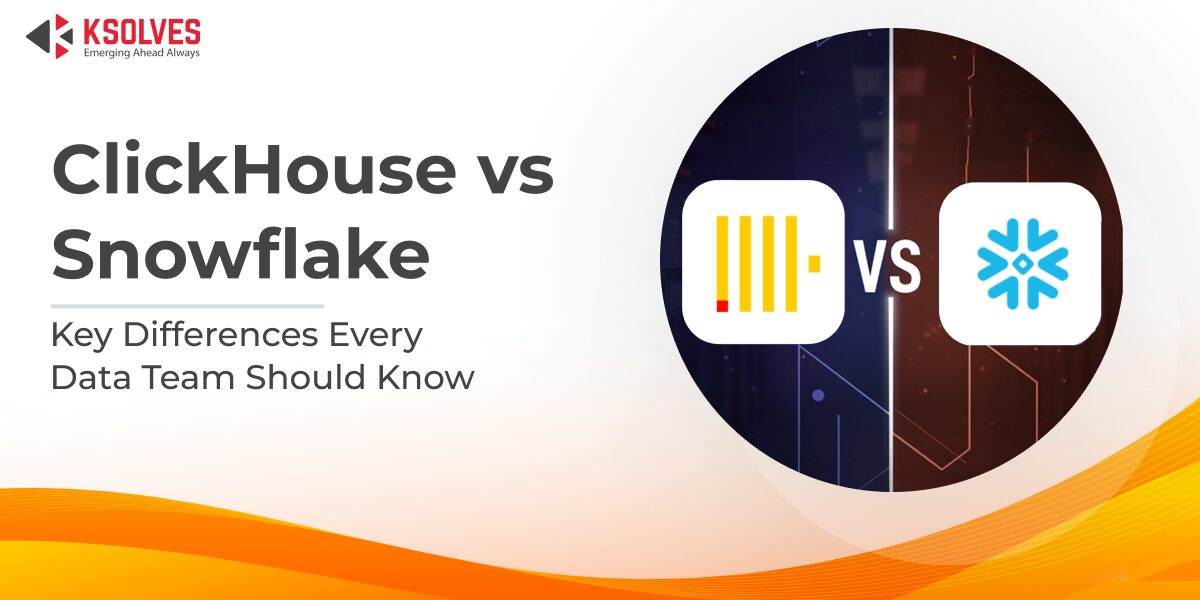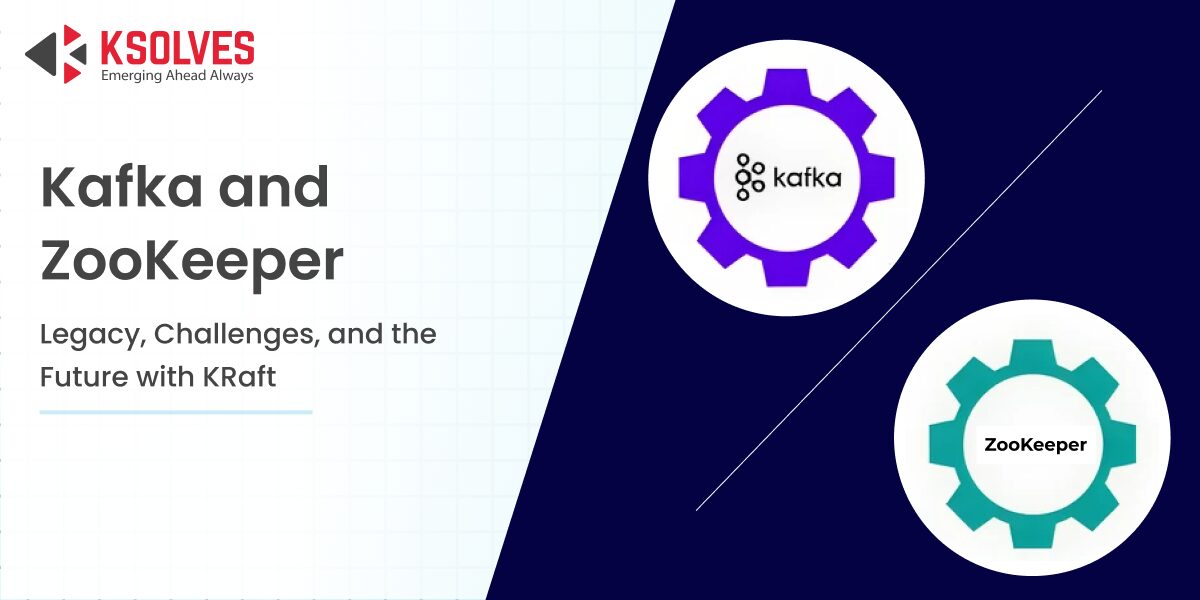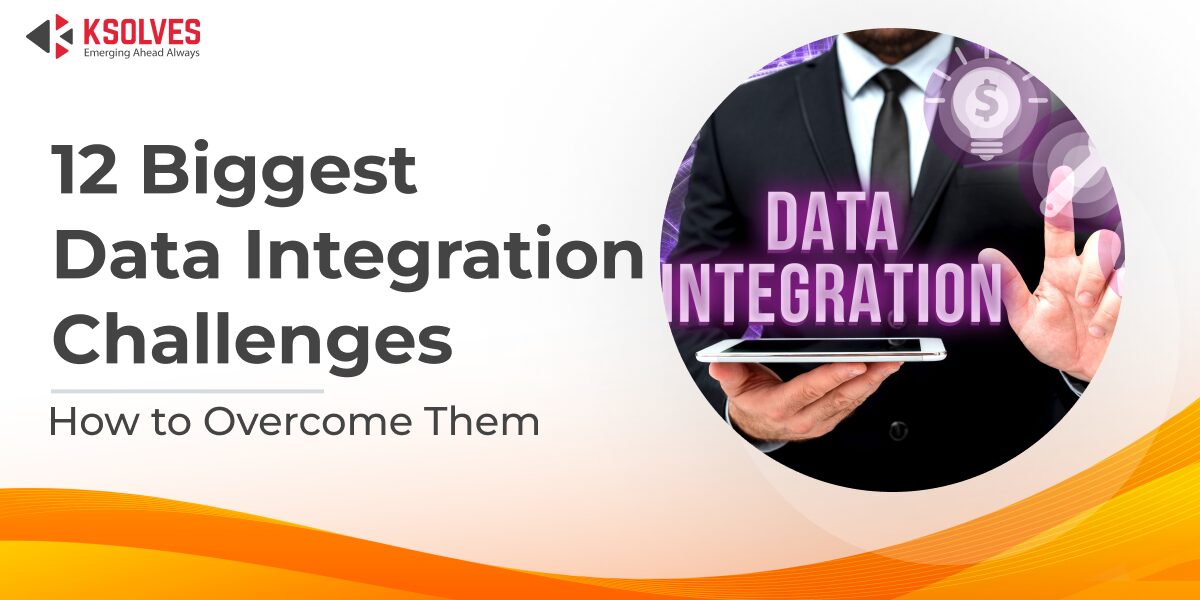Druid vs Snowflake: Choosing the Right Platform for Real-Time and Analytical Workloads
Apache Druid
5 MIN READ
October 6, 2025
![]()

When selecting the right analytics platform for your enterprise, understanding the unique strengths and capabilities of each option is crucial. Two prominent platforms that often come up in discussions about data analytics and processing are Apache Druid and Snowflake. While both are designed to handle large volumes of data and provide powerful insights, they cater to different business needs. Apache Druid shines in real-time analytics and high-performance querying, making it ideal for time-sensitive operations. On the other hand, Snowflake excels in scalable data warehousing and complex analytical queries, providing a robust solution for large-scale data management.
For B2B enterprises aiming to leverage the full potential of their data, choosing between Druid and Snowflake requires a deeper dive into their architectural design, use cases, and cost structures. Understanding how each platform aligns with your data processing requirements is the key to unlocking maximum value. This comparison will explore these two platforms from multiple angles to help you make an informed decision that best fits your business objectives.
Understanding Apache Druid and Snowflake
- Apache Druid: Real-Time Analytics Engine
Apache Druid is an open-source, real-time analytics database designed for fast, slice-and-dice analytics on large datasets. It excels in scenarios requiring low-latency data ingestion and sub-second query responses. Druid’s architecture combines elements of time series databases, search systems, and columnar storage, making it ideal for applications like real-time dashboards, monitoring systems, and interactive analytics.
- Snowflake: Cloud-Based Data Warehousing
Snowflake is a cloud-native data warehousing platform that offers scalable storage and compute capabilities. It is optimized for complex, large-scale analytical queries over historical data. Snowflake’s architecture separates compute and storage, allowing for flexible scaling and efficient data processing. It supports structured and semi-structured data, making it suitable for a wide range of data analytics applications.
Architectural Differences
Data Ingestion and Processing
- Apache Druid: Supports real-time data ingestion from sources like Apache Kafka and Amazon Kinesis, enabling immediate data availability for querying. Druid performs roll-ups and simple transformations during ingestion, optimizing data for fast querying.
- Snowflake: Primarily handles batch data loading through tools like Snowpipe and third-party ETL solutions. Transformations are typically performed post-ingestion using SQL-based tools like dbt.
Query Performance and Latency
- Apache Druid: Optimized for low-latency queries, making it suitable for real-time analytics and interactive dashboards. Utilizes bitmap and inverted indexes to accelerate query performance, especially for high-cardinality data.
- Snowflake: Designed for complex OLAP queries over large datasets, with query latencies typically ranging from seconds to minutes. Lacks built-in indexing mechanisms, relying on its architecture and clustering keys for performance optimization.
Scalability and Deployment
- Apache Druid: Supports horizontal scaling by adding more nodes to the cluster, distributing the load effectively. Data segments in Druid are immutable once committed, ensuring consistency and reliability. Can be deployed on-premises or in the cloud, offering flexibility based on enterprise requirements.
- Snowflake: Offers automatic scaling of compute resources, allowing for seamless handling of varying workloads. The decoupling of compute and storage resources enables independent scaling, optimizing cost and performance. Built for the cloud, Snowflake leverages cloud infrastructure for scalability and performance.
Cost Considerations
- Apache Druid: Being open-source, Druid eliminates licensing costs, making it a cost-effective solution for enterprises. Costs are primarily associated with the infrastructure required to run Druid, which can be optimized based on usage. Requires in-house expertise for setup, maintenance, and scaling, potentially increasing operational costs.
- Snowflake: Snowflake’s pricing model is based on compute and storage usage, which can be advantageous for variable workloads. Offers features like auto-suspend and auto-resume to optimize costs during periods of inactivity. As a fully managed service, Snowflake reduces the need for in-house maintenance, potentially lowering operational costs.
Use Cases in B2B Enterprises
Apache Druid
- Real-Time Dashboards: Ideal for B2B applications requiring up-to-the-minute data visualization and decision-making.
- Operational Monitoring: Suitable for monitoring systems where immediate insights into operational metrics are critical.
- Fraud Detection: Effective in scenarios requiring rapid analysis of events to detect and mitigate fraudulent activities.
Snowflake
- Data Warehousing: Perfect for enterprises needing a centralized repository for historical data analysis.
- Advanced Analytics: Supports complex analytical queries, making it suitable for data science and business intelligence applications.
- Data Sharing: Facilitates secure and governed data sharing across departments and external partners.
| Feature Comparison: Apache Druid Vs Snowflake | ||
| Feature | Apache Druid | Snowflake |
| Core Technology | Open-source, distributed data store for real-time analytics | Cloud-based data warehouse with scalable compute and storage |
| Real-Time Ingestion | Supports real-time data ingestion via Kafka, Kinesis | Primarily handles batch ingestion via Snowpipe or ETL tools |
| Query Performance | Sub-second query latency, excels in real-time aggregations | Optimized for batch queries with higher latency, but handles large-scale analytics |
| Data Processing | Optimized for low-latency, real-time queries with time-series data | Optimized for complex, large-scale analytical queries |
| Scalability | Horizontal scaling, flexible deployment on-prem or cloud | Elastic scaling with separation of compute and storage resources |
| Cost | Open-source with infrastructure costs, operational overhead | Usage-based pricing model for compute and storage |
When to Choose Apache Druid?
Druid is purpose-built for use cases where real-time visibility into events is mission-critical. B2B enterprises dealing with dynamic operational environments can leverage Druid for:
- Real-Time Dashboards: Marketing analytics, user behavior monitoring, financial trading platforms.
- Operational Intelligence: IoT analytics, network monitoring, supply chain visibility.
High-Concurrency Requirements: Druid’s distributed architecture supports thousands of simultaneous queries. - Event-Driven Data Streams: Native Kafka integration makes Druid ideal for businesses ingesting data continuously.
Example:
An e-commerce company could use Druid to instantly visualize customer browsing behavior, enabling real-time personalization or fraud detection on transactions.
When to Choose Snowflake?
Snowflake is ideal when your focus is on large-scale reporting, deep analytics, and machine learning readiness. It’s particularly powerful for enterprises aiming to:
- Centralize Data from Multiple Sources: Snowflake simplifies bringing together data from CRM, ERP, IoT, web analytics, and more.
- Support Cross-Functional BI Needs: Marketing, finance, HR, and product teams can all work from a unified dataset.
- Enable Secure Collaboration: Native data sharing allows businesses to collaborate securely with partners, vendors, and subsidiaries.
- Power Machine Learning Workflows: Snowflake integrates smoothly with data science tools and cloud-native AI services.
Example:
A multinational manufacturing company could centralize production, logistics, sales, and service data into Snowflake for consolidated business intelligence reporting and predictive analytics across geographies.
Strengths and Limitations: A Balanced View
Apache Druid Strengths
- Near-instant analytics on fresh data
- High concurrency support
- Efficient aggregation and filtering on high-cardinality datasets
- Great for operational analytics where response time is critical
Apache Druid Limitations
- Less suitable for complex, multi-table joins
- Requires more hands-on tuning and maintenance
- Native SQL support is improving but not as mature as Snowflake
Snowflake Strengths
- Extremely simple to scale and maintain
- Advanced SQL capabilities and deep query optimization
- Strong ecosystem support (connectors to Tableau, Power BI, ML platforms)
- Native support for semi-structured data
Snowflake Limitations
- Higher latency for real-time operational queries
- Can become costly with high compute usage if not monitored
- Designed more for analytical reporting rather than interactive operational analytics
Can You Use Druid and Snowflake Together?
Interestingly, many modern architectures combine both platforms to meet different needs.
- Apache Druid handles real-time analytics and operational dashboards where millisecond response times matter.
- Snowflake manages historical reporting and complex, large-scale analysis across multiple dimensions and data sources.
For example, a financial services firm might use Druid to monitor real-time transaction anomalies while using Snowflake for quarterly performance reporting and regulatory compliance analytics.
By integrating both, businesses can achieve real-time visibility and deep historical insight, covering the entire spectrum of data-driven decision-making.
Conclusion: Which One Should Your Business Choose?
If your B2B enterprise prioritizes instant insights from streaming data, operational intelligence, or high concurrency, Apache Druid will likely be the better choice.
However, if your goal is to build a scalable, cost-efficient, easy-to-manage data warehouse for deep business analysis, advanced reporting, and cross-team data sharing, Snowflake is the platform to invest in.
Ultimately, the decision comes down to the nature of your workloads, your real-time vs historical analytics needs, and your long-term data strategy. In some cases, the best solution could even be a hybrid architecture that leverages the strengths of both platforms.
Choosing wisely today will set the foundation for smarter, faster, and more scalable data-driven success tomorrow.
![]()







AUTHOR
Apache Druid
Anil Kushwaha, Technology Head at Ksolves, is an expert in Big Data. With over 11 years at Ksolves, he has been pivotal in driving innovative, high-volume data solutions with technologies like Nifi, Cassandra, Spark, Hadoop, etc. Passionate about advancing tech, he ensures smooth data warehousing for client success through tailored, cutting-edge strategies.
Share with